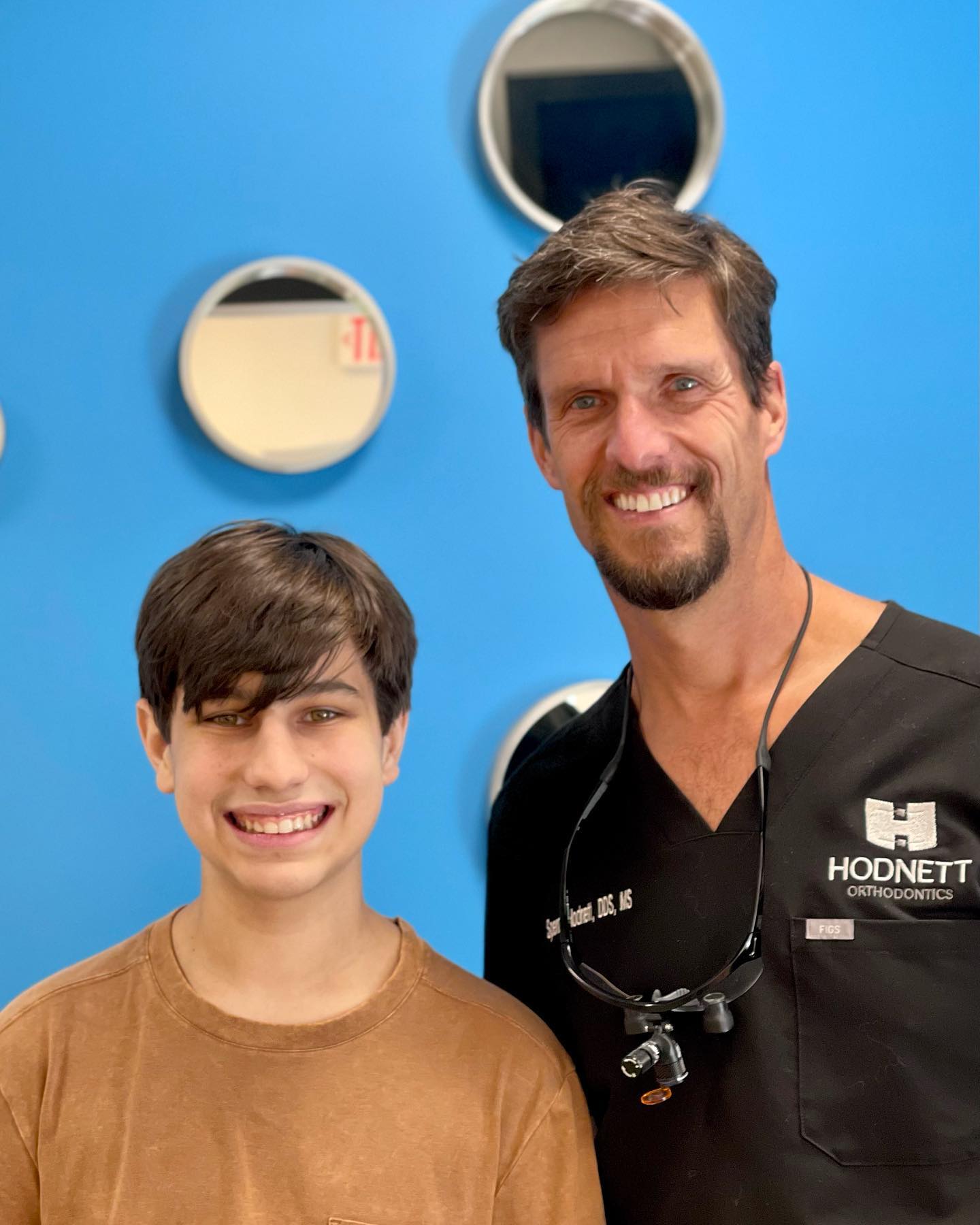When Should My Child First See An Orthodontist?
The American Association of Orthodontists recommends that all children get an orthodontic evaluation by age seven. Most kids this age have both baby teeth and permanent teeth, which makes it easier for Dr. Hodnett to spot developing problems. If your child doesn’t need treatment right away, Dr. Hodnett will keep a close eye on their growth and give you advice on how to best care for their teeth.
When your child’s teeth and jaws are done growing, our team will come up with a customized plan to fix any problems. Most of the time, treatment starts around 11 or 12 years old, when all of the permanent teeth have come in. But every child is different, so it’s important to follow Dr. Hodnett’s recommendation if you want your child to get the best care possible.
Reasons For Early Treatment
There is no need to rush off to an orthodontist as soon as your child’s teeth start to come in. Most children should see an orthodontist for an initial consultation by the time they are seven years old. Early treatment is often not necessary, and in many cases, it is more effective to wait until your child’s teeth and jaws have reached their full growth.
That said, if you notice any signs of dental problems, such as crowding, spacing, overbites, or underbites, it is always best to schedule a consultation as soon as possible. Dr. Hodnett will be able to assess the situation and advise you on the best course of action.
Benefits Of Getting Braces As A Child
When your child requires orthodontic treatment in Charlotte, NC, starting sooner rather than later has a number of advantages. In addition to improving the alignment of your child’s teeth, braces have the potential to address a number of other orthodontic issues. This treatment offers numerous benefits, including improved chewing, swallowing, breathing, and speaking.
Our treatment plans at Hodnett Orthodontics can also prevent future dental issues that may develop in the future for your child. These issues may result from poor oral hygiene. The initial step in our procedure is a comprehensive examination of your child’s mouth, oral hygiene, and dental needs. To accomplish this, we will take X-rays and digital scans of your child’s maxillofacial region (mouth and jaws).
Our examination can detect early indications of problems such as overbites, underbites, or crossbites, overcrowding, and tooth gaps, among others. Following the identification of any potential issues, Dr. Hodnett and his staff will be able to discuss treatment options that are compatible with your child’s lifestyle and budget.
Life With Braces
Thankfully, braces will have minimal impact on your child’s lifestyle, and while they may cause minor discomfort, braces should not be painful. However, in the first few days, your child may take over-the-counter pain relievers and eat softer foods to alleviate any discomfort.
One noticeable adjustment to your child’s diet will be to avoid chewy, sticky, and hard foods. Not only can food particles become stuck in braces, but they can also cause damage to the brackets and wires.
Our team is also available to answer any questions you and your child may have and to help make transitioning to life with braces a smooth process. With a little care and patience, wearing braces can be a breeze!




